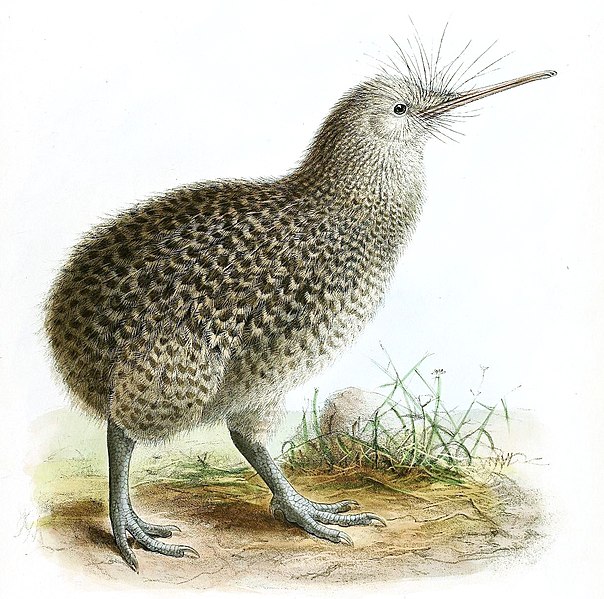Little Spotted Kiwi Bird Details
Apteryx owenii
Little Spotted Kiwi
Chhota Bindi Kiwi
John Gould in 1847
Apterygiformes (KIWIS)
Apterygidae
Apteryx
Exclusively in New Zealand.
Appearance :
The Little Spotted Kiwi is a small, flightless bird with a round body covered in dense, shaggy brown feathers. It has distinctive white spots on its plumage, giving it a speckled appearance.
Behaviour :
These kiwis are nocturnal and spend much of their time foraging on the forest floor. They have a strong sense of smell, which they use to locate food such as insects, worms, and fruit.
Habitat :
They inhabit dense, temperate rainforests and scrublands, preferring areas with thick undergrowth for cover during the day.
Diet :
Little Spotted Kiwis are omnivorous, feeding on insects, worms, fruit, seeds, and occasionally small vertebrates.
Conservation Status :
Near Threatened
Distribution :
They are native to New Zealand, specifically found on several offshore islands including Kapiti Island, Little Barrier Island, and others where predator control programs are in place.
Population Size :
Around 1,700 mature individuals.
Life Span :
Live up to 30 years.
Body And Tarsus:
The Little Spotted Kiwi is a small, flightless bird with a round body covered in brown feathers marked with white spots.
Head And Bill :
It has a small head with a long, slender bill that it uses to probe the ground for insects and worms.
Length :
Approximately 35-40 cm (14-16 inches).
Neck :
Short neck.
Size :
Small to medium-sized bird.
Tail Details :
Very short, almost invisible tail.
Weight :
Around 1-1.3 kg (2.2-2.9 lbs).
Wing :
Wings are small and not functional for flight.
Wing Span :
Wingspan is minimal due to reduced wing size.
Facial Feature :
Prominent facial whiskers that help them sense vibrations in the ground.
Nest Details :
- Nest: Usually, a burrow dug into the ground or under vegetation.
- Nest made up of: The nest is lined with leaves, grass, and feathers.
Breeding Season :
September to February.
Nesting Season :
During the breeding period.
Egg Color :
Creamy white.
Egg Length :
Approximately 6-7 cm (2.4-2.8 inches).
Egg Width and Weight :
Around 4-5 cm (1.6-2 inches).
Clutch Size :
1-2 eggs per clutch.
No. of Broods :
1 brood per breeding season.
Incubation Period :
About 70-80 days.
Nestling Period :
After hatching, around 5-7 days.
Vocalization :
Makes soft, low-pitched calls and occasional high-pitched whistles.
Sex Demorphism :
Males and females are similar in appearance.
Migration Details :
Non-migratory birds.







